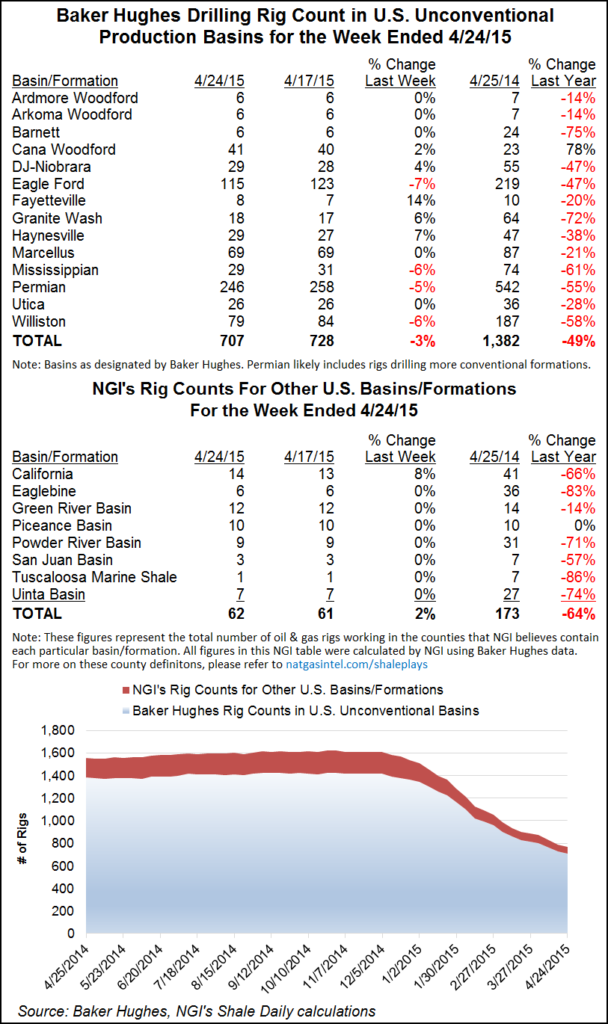Gas-Directed Rigs Added as Latest Count Shows Modest Changes Across Plays
More evidence that producers are turning to natural gas emerged in the latest Baker Hughes Inc. count of active drilling rigs, which covers the week ending May 29. The most recent count shows that while active oil-directed rigs in the United States declined by 13, three rigs were added on the natural gas side.

By category, nine horizontal rigs were lost, and six vertical rigs packed it in, while five directional rigs were added.
Changes in the U.S. rig count by basin were modest across the board. The Marcellus Shale was the biggest loser, giving up three rigs. However, the Eagle Ford Shale added three. The Fayetteville Shale after having gained rigs recently, lost two in the latest count to land at six active. The Permian and Williston basins each lost one rig in the latest census.
Louisiana lost two rigs in the latest count to land at 67. However, the emerging Tuscaloosa Marine Shale, much of which is in the Pelican State, is cutting a larger profile. Last week, the Tuscaloosa Trend blog reported that the play had 71 producing wells, 12 drilled but uncompleted and one abandoned.
Next door in Texas, the rig count declined by four to land at 369. According to the latest data from the Railroad Commission of Texas (RRC), in April well completions were up sharply compared to a year ago, but the total number of completions for the year is running behind last year’s tally.
In April RRC issued 848 original drilling permits, fewer than half the 1,919 issued in April 2014. The latest tally includes 721 permits to drill new oil and gas wells, nine to re-enter existing well bores and 118 for recompletions. There were 218 oil permits issued, 51 gas, 530 oil and gas, 40 injection, zero service and nine “other” permits (see Shale Daily, May 28).
© 2024 Natural Gas Intelligence. All rights reserved.
ISSN © 2577-9877 | ISSN © 1532-1266 | ISSN © 2158-8023 |
